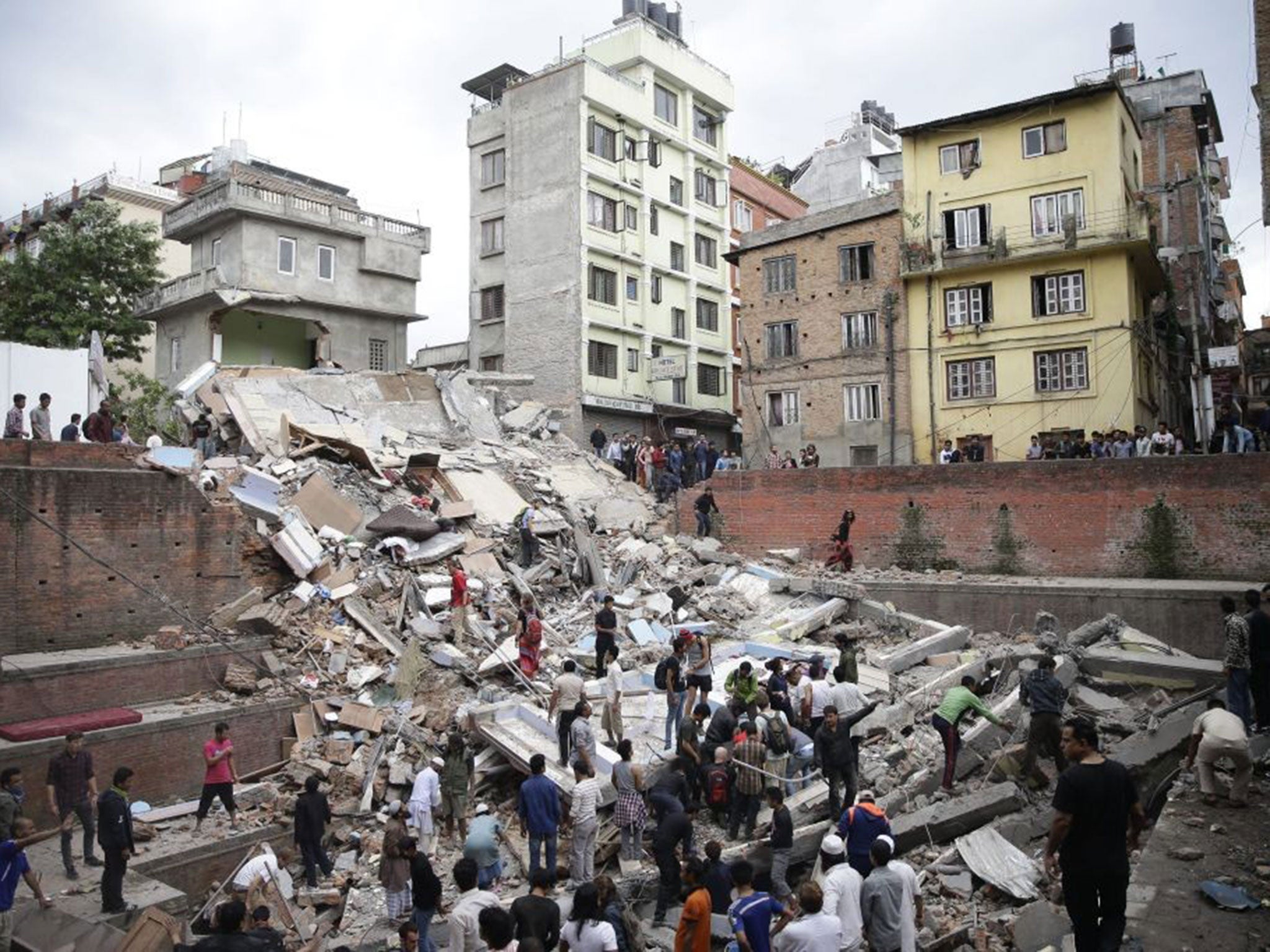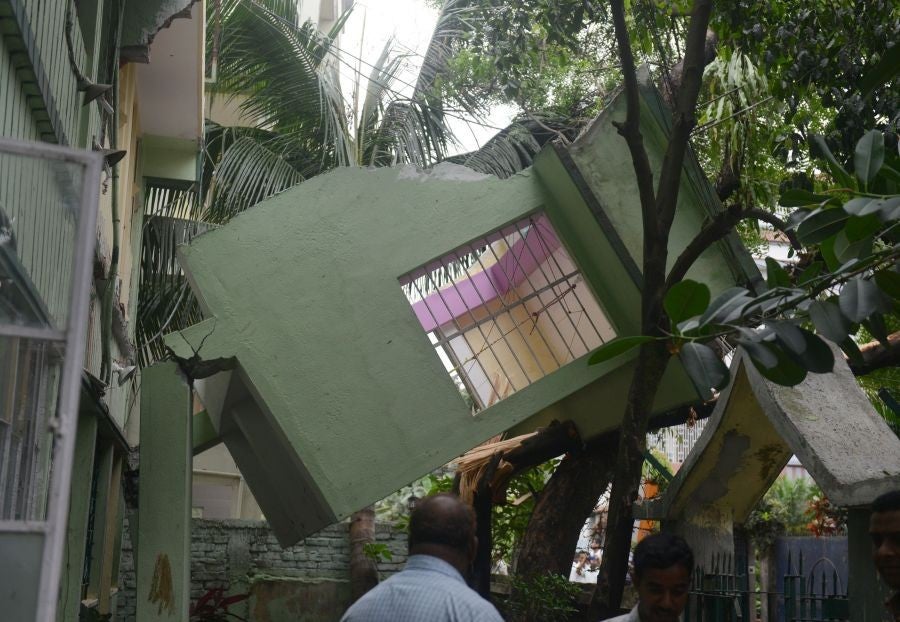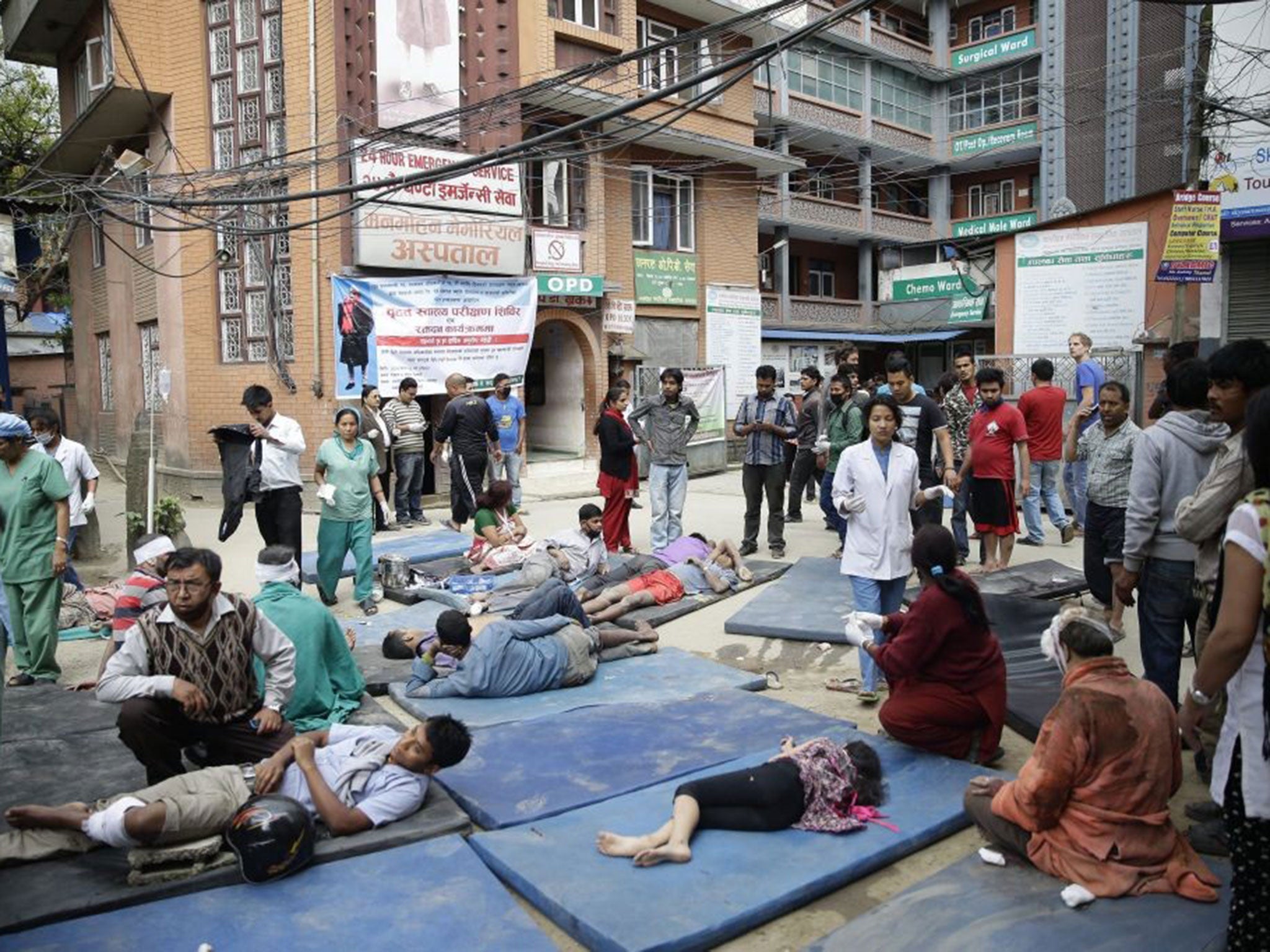Nepal earthquake was a 'nightmare waiting to happen' says lead scientist
Experts gathered in Nepal a week ago, warning 'nightmare' was inevitable

Just one week ago, 50 social scientists from around the world came to Kathmandu to figure out how to get the poor, overdeveloped capital prepared for an earth-shattering shock.
They knew they were racing against the clock, but experts did not know where to start in a city with such staggering disadvantages.
James Jackson is a scientist for Earthquakes Without Frontiers, a group that tries to help Asian cities prepare for disasters.
Also head of the earth sciences department at Cambridge University, Mr Jackson said: "It was sort of a nightmare waiting to happen. Physically and geologically what happened is exactly what we thought would happen.
"I was walking through that very area where that earthquake was and I thought at the very time that the area was heading for trouble. The construction is appalling in Kathmandu.
"If you live in the Kathmandu Valley you have other priorities, daily threats and daily nasty things happen to you in terms of air quality, water quality, pollution, traffic and just poverty.
"But it doesn't mean that the earthquakes go away."

The US Geological Survey and India’s meteorological service said the shallow quake struck 77km northwest of Kathmandu at 6.11am (GMT), with walls crumbling and families racing outside their homes.
"They knew they had a problem but it was so large they didn't know where to start, how to start," said Hari Ghi, South East Asia regional coordinator for Geohazards International, a group that calculates worldwide quake risks.
Nepal was making progress on reducing its vulnerability to earthquakes, but not quickly or big enough.
Mr Ghi's group, on April 12, updated a late 1990s report summarising the Kathmandu Valley risks.
The report read: "With an annual population growth rate of 6.5 per cent and one of the highest urban densities in the world, the 1.5 million people living in the Kathmandu Valley were clearly facing a serious and growing earthquake risk."

Earthquakes of similar magnitude can have bigger effects on different parts of the globe because of the manner of building construction and population density.
A 7.8 magnitude earthquake could kill 10 to 30 per one million residents in California, but has killed at least 1,500 in Nepal, and could kill up to 10,000 in parts of Pakistan, India, Iran and China, said U.S. Geological Survey seismologist David Wald.
This is the fifth significant earthquake in Nepal in the last 205 years, including a massive one in 1934 that levelled the city.
To find out how you can help victims of the Kathmandu disaster, click here.
Join our commenting forum
Join thought-provoking conversations, follow other Independent readers and see their replies
Comments